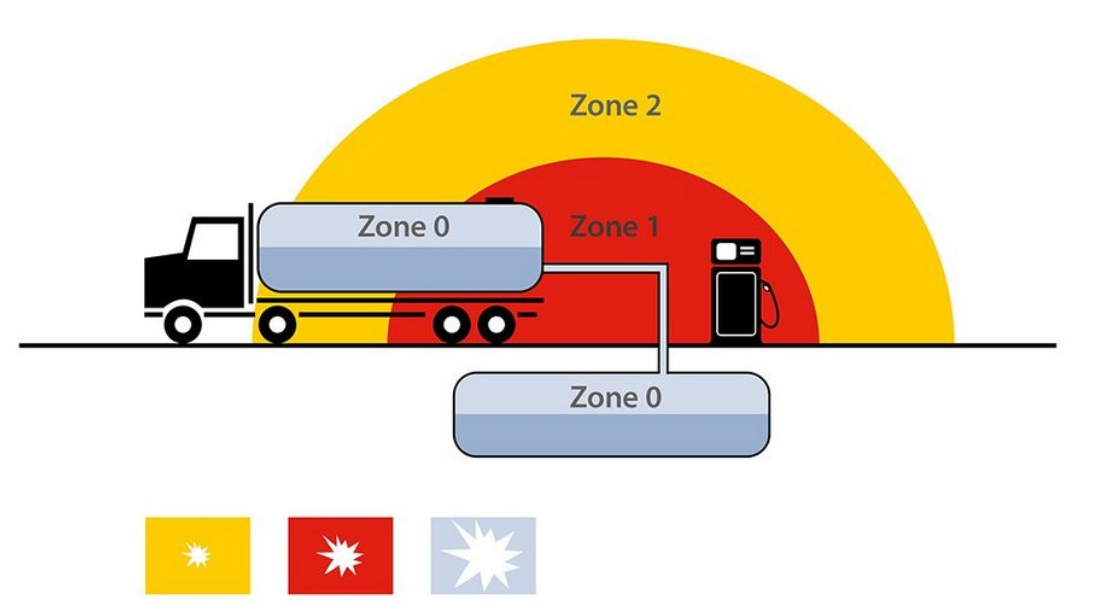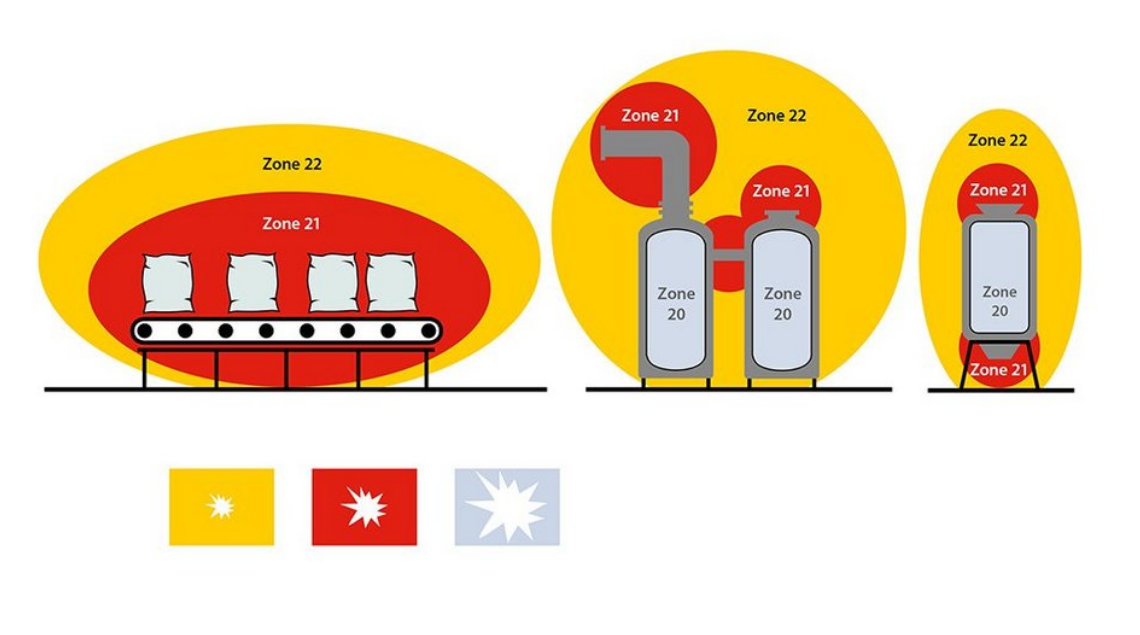Classification of explosion protection zones
Classification of explosion protection zones
According to Directive 2014/34/EU, a potentially explosive area is a space in which the atmosphere could become explosive on account of the local and/or operational conditions. These potentially explosive atmospheres are divided into zones. Depending on the frequency and duration of the occurrence of hazardous, explosive atmospheres. An explosive atmosphere is defined as a mixture with air, under atmospheric conditions, of flammable substances in the form of gases, vapours, mists or dust in which, after ignition has occurred, combustion spreads to the entire unburned mixture.
Hazard gas | vapoor | mist
Zone 0
A place in which an explosive atmosphere consisting of a mixture with air of dangerous substances in the form of gas, vapour or mist is present continuously or for long periods or frequently.
Zone 1
A place in which an explosive atmosphere consisting of a mixture with air of dangerous substances in the form of gas, vapor or mist is likely to occur in normal operation occasionally.
Zone 2
A place in which an explosive atmosphere consisting of a mixture with air of dangerous substances in the form of gas, vapor or mist is not likely to occur in normal operation but, if it does occur, will persist for a short period only.

Hazard powder | dust
Dust clouds in the explosive region (above the minimum explosible concentration) are categorized into 3 zones, based upon the grade of release.
Zone 20
A place in which an explosive atmosphere in the form of a cloud of combustible dust in air is present continuously or for long periods or frequently.
Zone 21
A place in which an explosive atmosphere in the form of a cloud of combustible dust in air is likely to occur in normal operation occasionally.
Zone 22
A place in which an explosive atmosphere in the form of a cloud of combustible dust in air is not likely to occur in normal operation but, if it does occur, will persist for a short period only.

